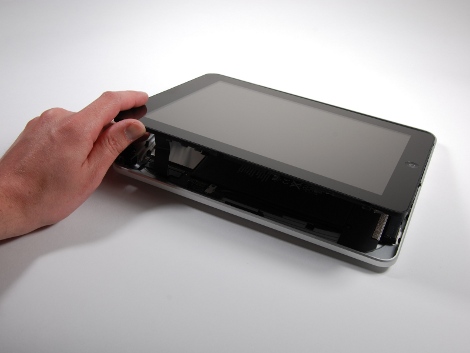
The folks at iFixit must hold some kind of record for fastest-voided warranty. It’s been less than 48 hours since Apple unleashed a torrent of new computers and peripherals, and they’ve already set upon the new wares like a pack of ravenous, spudger-wielding Velociraptors, photoblogging the splayed entrails for our edutainment.
The refreshed MacBook holds few surprises, resembling a Star Trek teleportation mix-up between the prior 13″ white MacBook and the current 13″ MacBook Pro. It retains a white polycarbonate case much like its predecessor while adopting a subset of the Pro’s components — CPU and GPU, glass trackpad, Mini DisplayPort, and the long-lived but sealed battery. Internally the system is still a maze of different-sized Torx, Phillips and tri-wing screws, but they do report this latest revision to be easier to dismantle for repair.
More novel inside and out is the new Magic Mouse, which early reports suggest may finally redeem Apple’s eleven year train wreck of mice. There’s not much to see on the bottom half — it’s a typical wireless mouse consisting of batteries, laser tracker and a Bluetooth chip. The top is something to behold though, with nearly the entire surface encrusted in capacitive sensors capable of gestural input. It resembles a miniature version of this electrostatic interface we saw in April.
No teardowns of the new iMacs, Mac mini or Time Capsule have taken place yet, but it’s surely just a matter of time. Even Velociraptors need to eat and sleep.
Update: 27″ iMac teardown added. Rawr!
















